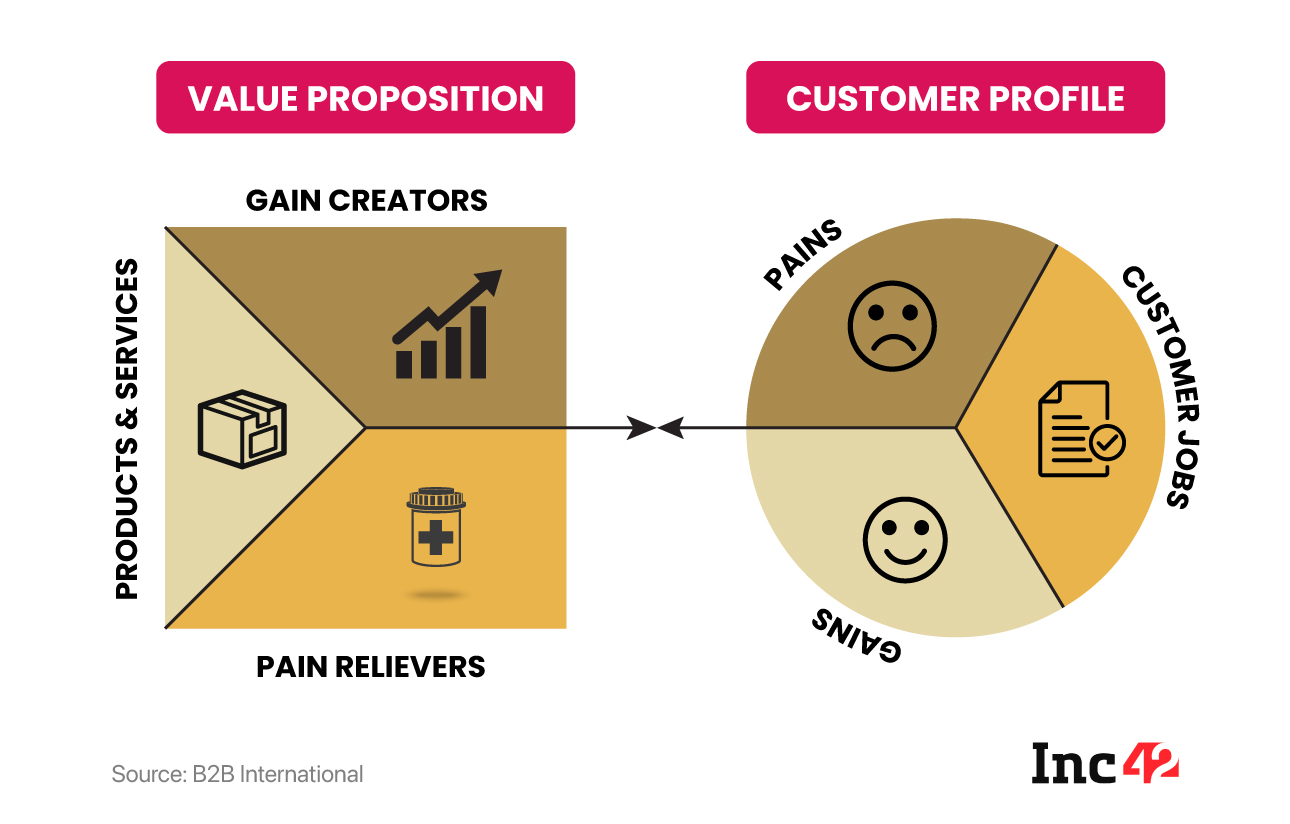What Is Product-Market Fit (PMF)?
Most people know what Marc Andreessen said about product-market fit (PMF) – it “means being in a good market with a product that can satisfy that market”. As he noted, most companies would worry more about the product instead of finding a good market or a suitable customer base with a real pain point and looking for a product to mitigate that need. A Y Combinator blog equals PMF to having one’s hair on fire, an all-pervading need that cannot be ignored at any cost.
Therefore, SaaS startups or any other company must study their target markets to identify these practical needs and develop solutions to address real-world requirements. Finding the product-market fit is the most essential thing a newly launched startup can do. But business success will primarily depend on what the market wants. One may develop an outstanding product, but unless it can cater to unserved/underserved customers, the product-market fit cannot be achieved, hindering a company’s growth in the long run.
What Matters Most When SaaS Startups Look For PMF
Analysts today are not too excited about net promoter score (NPS) or first-mover advantage unless a company hits the PMF first. NPS can measure customer loyalty, but even this gold standard for customer experience may not last long in a world of neck-and-neck competition. Also, markets evolve fast and new requirements are born, meaning pioneering companies may soon lose relevance and disappear.
‘Satisfying’ the market for the long haul is no mean task, either, and demands a qualitative approach if companies want to grow sustainably. In essence, it is not easy to define PMF best practices for better business outcomes. But here are five ground rules to help you get there.
- Product-market match: To determine if a product is a suitable match for its intended customers, a SaaS startup should have a deep understanding of its unique value proposition (UVP), target audience and competition. The Value Proposition Canvas (VPC) is a helpful tool in this area, helping startups to communicate this information effectively. For context, VPC is a visual representation of customer profiles, their pain points, product/service details on offer and how it helps customers navigate challenges and gain from those solutions.

- Monitoring progress: For PMF, nothing speaks better than traction and revenue growth. Various metrics and tools are available to measure if companies have achieved product-market fit – if markets appreciate those products and want more. Monthly recurring revenue (MRR), customer acquisition costs (CAC), customer churn rate and retention rate are critical metrics to evaluate these. If MRR is growing steadily, CAC is cost-effective and the retention rate is high, a product is doing good and growing sustainably. If that is not the case, one should review the product, iterate more or go for a complete pivot. Tools like Mixpanel and HubSpot’s CRM can help companies monitor PMF and quickly rectify what is not working.
- Keeping your ear to the ground: Get feedback from existing and potential customers to determine whether the product solves a problem they care about, whether they are willing to pay for it, and if they are satisfied with the solution. SaaS startups can use surveys, interviews and launch prototypes or beta versions of products to collect customer feedback. Net promoter score (NPS) and customer satisfaction score (CSAT) are useful metrics to analyse customer feedback.
- Keeping additional costs at bay: Building a feature-rich, perfect product before hitting PMF may not be sustainable as development is in a state of flux. Hiring too many experts or premature scaling is bound to hit companies if their products don’t have market validation in the first place.
- Exploring new ideas: Hitting PMF may feel like the jackpot in the early stage. But startups should never ignore competition or put innovation on the back burner. Winning this game is not just about making the products better. Keep innovating; it may hit the sweet spot and create an all-new market. As Steve Jobs said: People don’t know what they want until you show it to them… Our job is to figure out what they’re going to want before they do.
Five Ways To Find Product-Market Fit In SaaS
- Address genuine pain points. Identify and tackle your target customers’ most significant pain points. SaaS companies should consider quality, pricing and value-additions at this stage.
- Develop an MVP for easy testing. Go for a user-friendly and intuitive prototype instead of overwhelming potential customers with extensive manuals or hours of tutorials. The faster the understanding at the user level, the quicker the feedback and the next iteration.
- Set up realistic pricing. Price the SaaS product in a manner that is affordable for the target market and profitable for the company. Conduct thorough research to get a fair idea of pricing standards across the industry.
- Focus on customer support. Provide prompt and hassle-free customer support when SaaS users face issues with a new product. Contact them via phone, email, live chat, WhatsApp and other channels.
- Provide free trials, conduct polls/surveys: Let potential customers explore the product before committing. Also, conduct polls and surveys, asking relevant questions to measure expectations, fulfilment, lapses and more. This approach can boost conversion rates and reduce churn.








